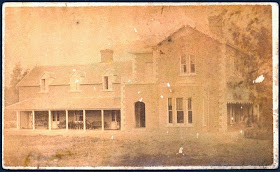A series of posts chronicling the daily experiences of the 'Lost in the Bush' children
Early on Saturday 20th Wilson, Duff, and Kenna his stepson resumed the search where Wilson had left off, and were assisted by the trackers. The superiority of the Aborigines was apparent, and the search continued at a much more rapid pace as the trackers read off the signs of the children's journeying. It was the trackers who found where the children had slept, had fallen in the dark, and with failing strength were unable to carry Frank.
Searchers approached a rise resembling the one near the station, they guessed the children would make for it, and on the further side before a vast ocean of dark and dreary heath stretching to the horizon, they found discarded broom tied with rope.
About 3pm Wilson saw fresher tracks crossing their trail like an X, he called to the trackers who corroborated his view, thereby saving 3 days tracking, within a mile they came across a clump of stringy-bark saplings where the children had spent the previous night.
Duff and Wilson both rode ahead at times. It was approaching sunset when Duff rode ahead of the other searchers to higher ground and saw a clump of saplings, closer he saw a covering moving in the wind and found the children asleep, Frank in the middle wrapped in Jane’s dress. The arrival of the others
woke the children, Isaac attempted to sit up and speak but could only groan feebly “Father” and fall back. Frank asked why they had not come sooner. Jane could not open her eyes, only murmured “Cold, cold”. They had walked over 4 miles on the final day.
Emaciated, weak and barely able to speak the children were given crumbs of bread and taken to a waterhole where they were much revived before proceeding to the nearest hut 8 miles away, where they were reunited with their mother about 8pm. Putting the children to bed, Jane was heard saying her prayers as she had each night.
 |
| The waterhole as it is today, at the Nurcoung Bushland Reserve |

























%2B-%2BCopy.JPG)
.JPG)


.jpeg)




.jpeg)
.jpeg)
.jpeg)
.jpeg)
.jpeg)
.jpeg)










